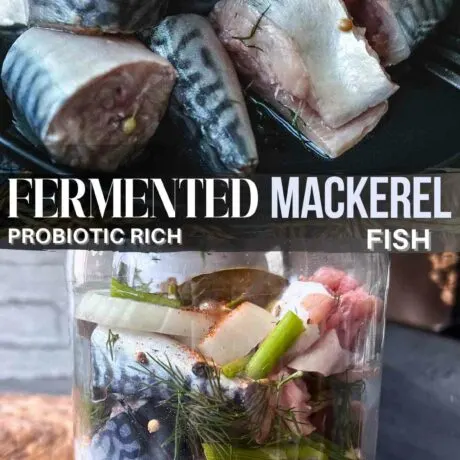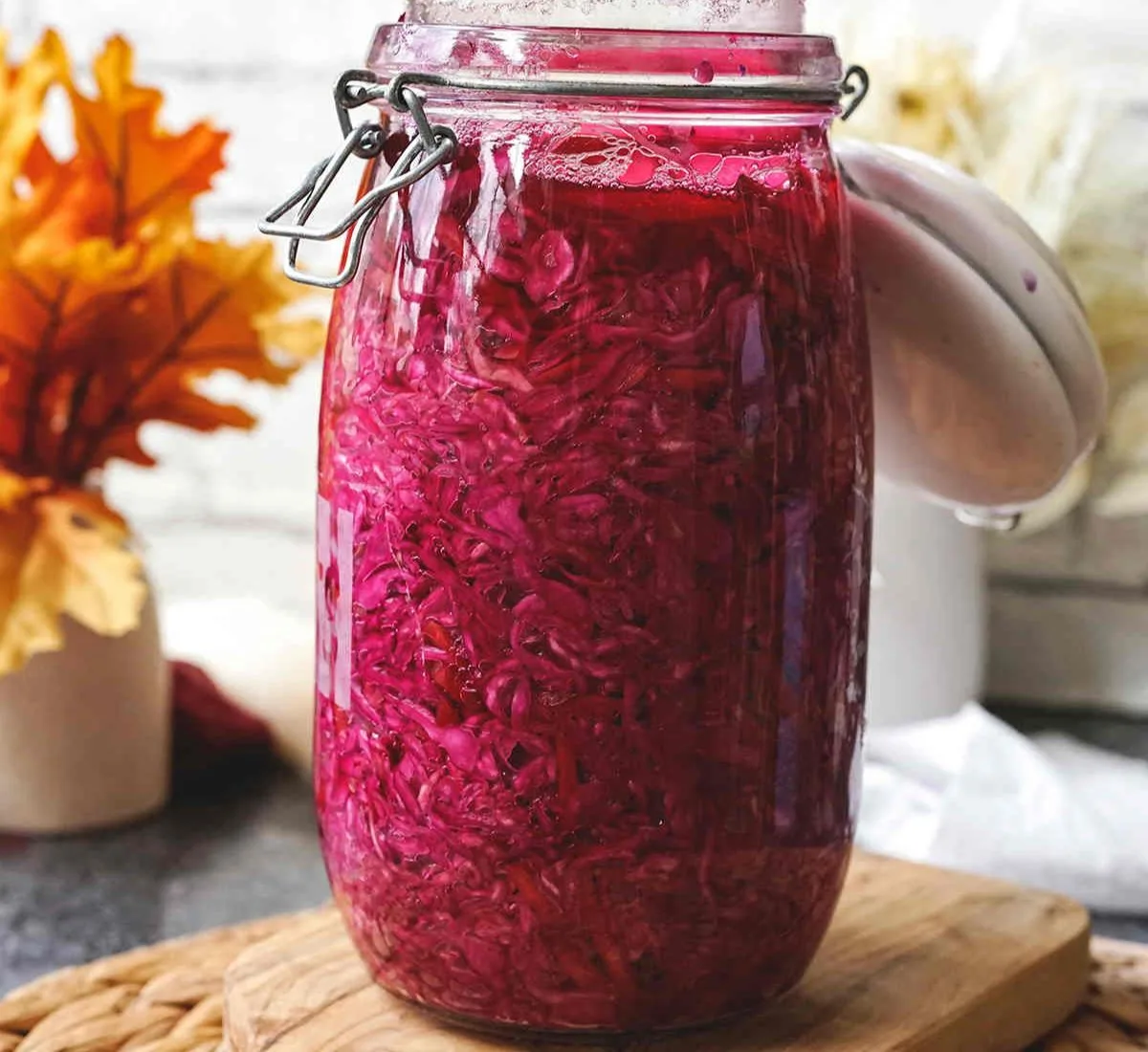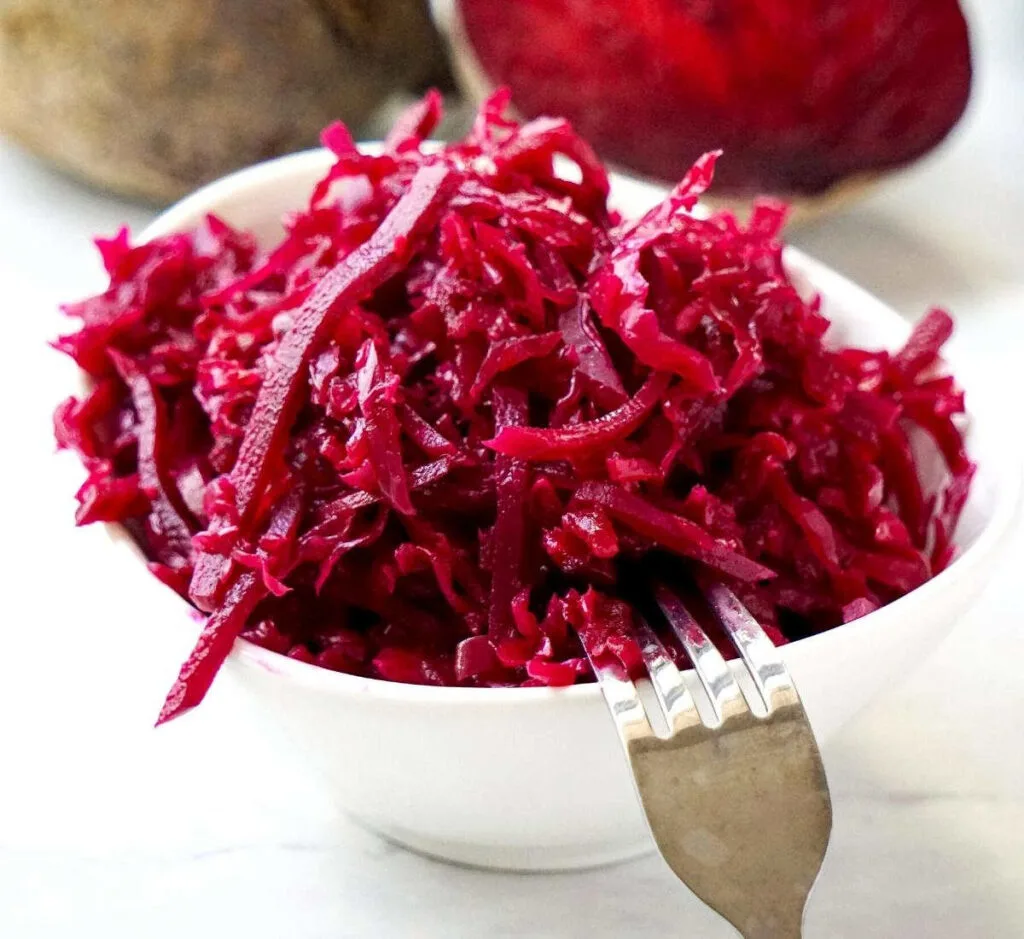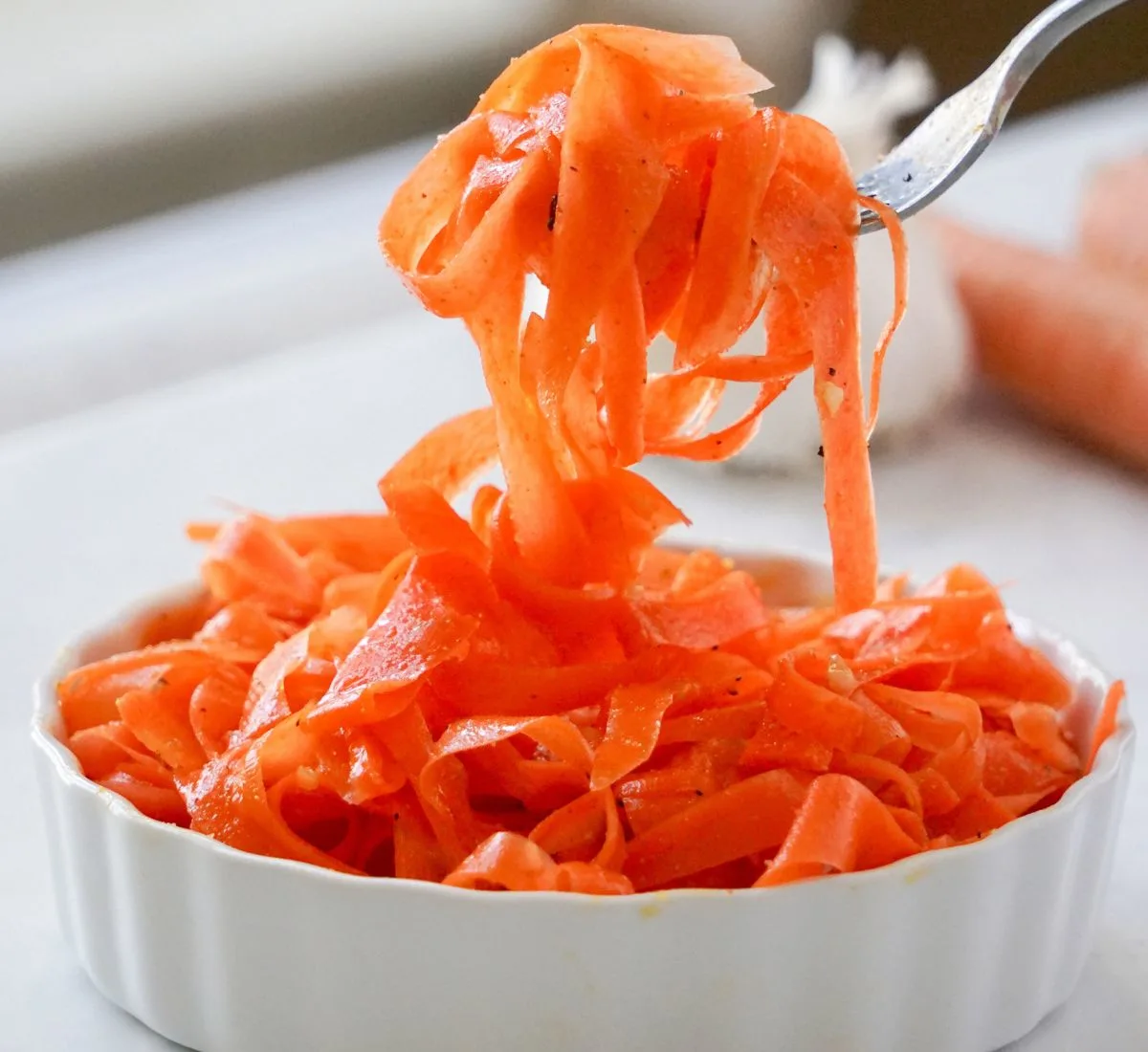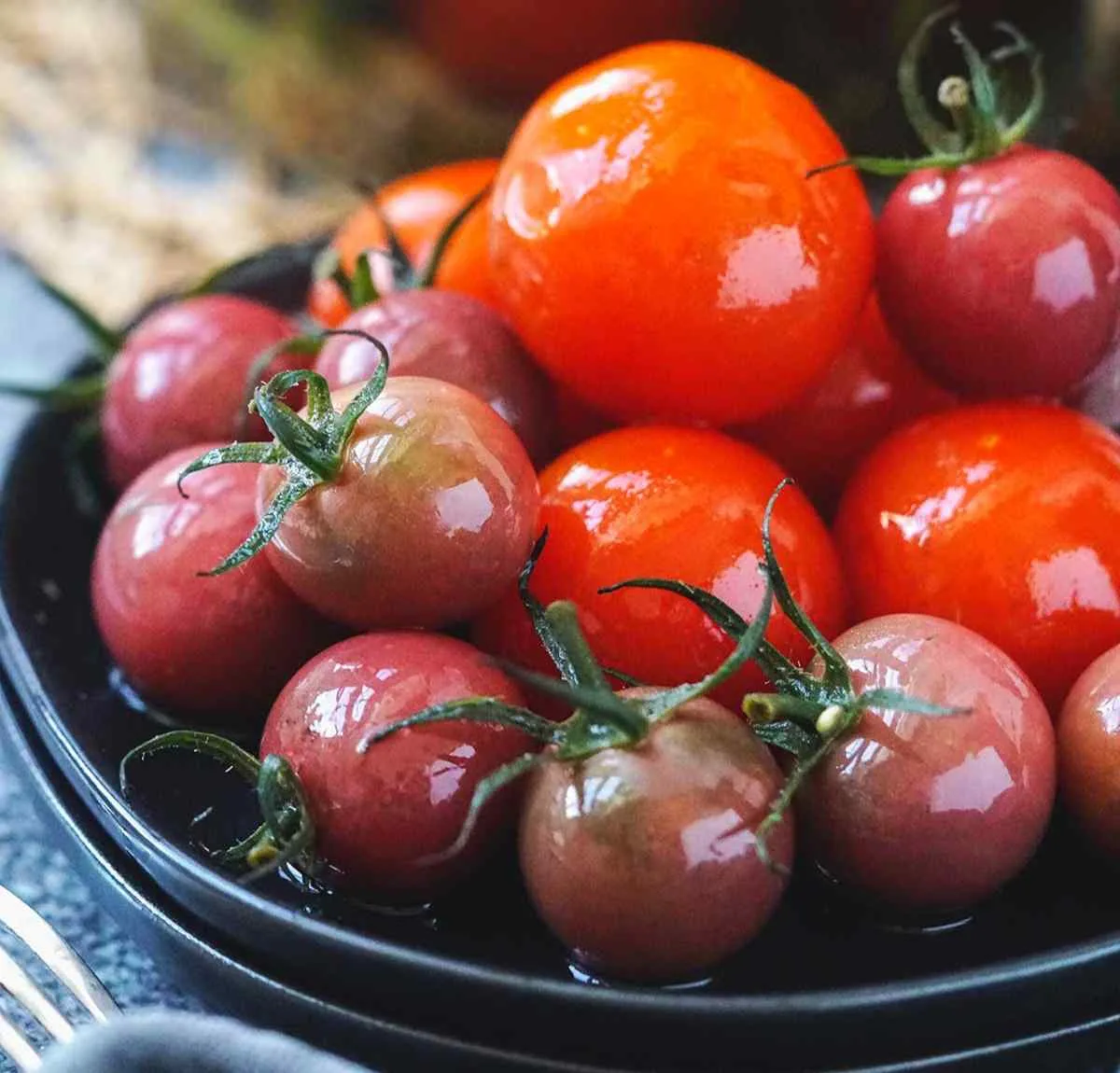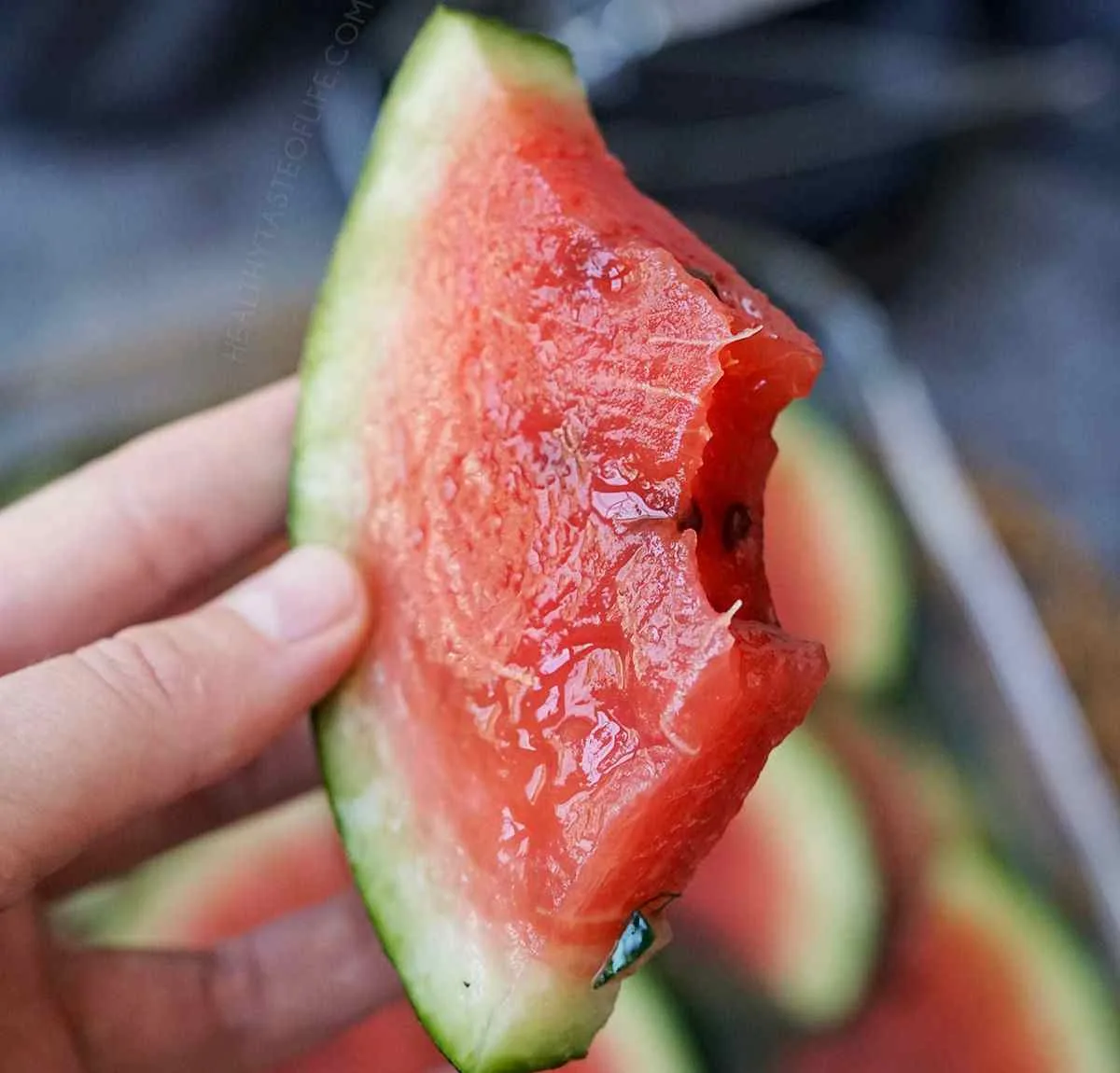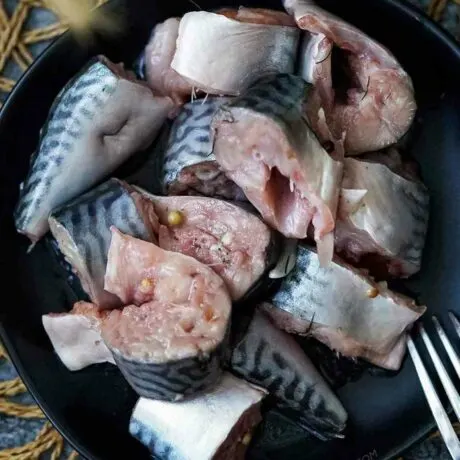Welcome to the fascinating experience of fermenting fish, where fresh mackerel takes the center stage! I’ll be sharing my experience on creating lacto fermented mackerel, offering tips on preserving fresh mackerel, and exploring the benefits of fermented fish. Whether you’re curious about how to ferment fish at home or the nuances of lacto-fermented mackerel, this guide is for you!
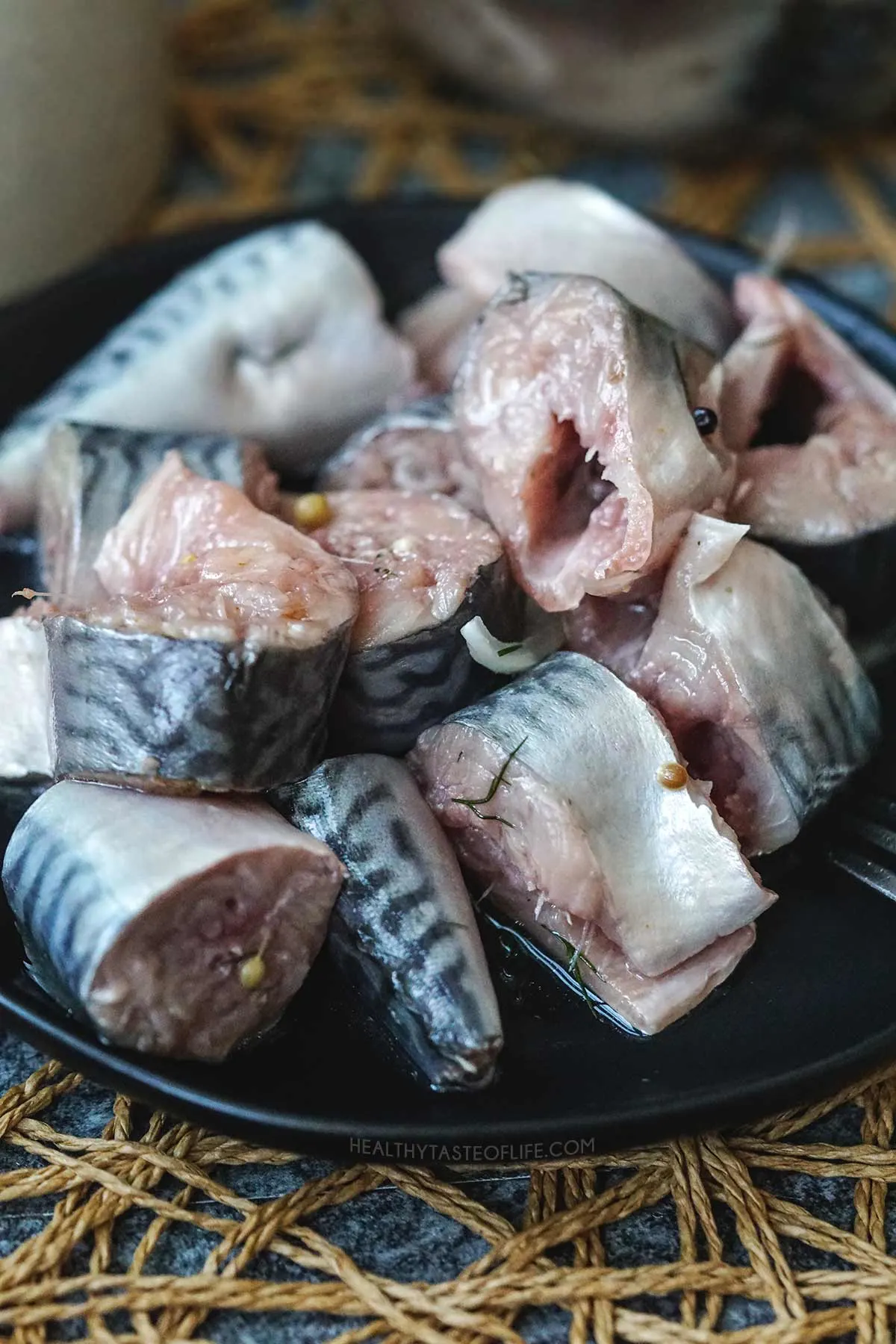
Ever looked at a fresh mackerel and wondered, “How can I preserve this beauty for later?” Or maybe you’ve been curious about the rich world of fermented fish and are itching to give it a try.
Whether is lacto fermented mackerel, or just a simple fish fermentation recipe you’re after, I’m here to guide you. Through personal trials and a love for preserving food, I’ve discovered the joys and benefits of fresh fish fermentation.
Check also:
- Fermented Cucumbers (Dill Pickles)
- Fermented Red Cabbage (Sauerkraut)
- Fermented Beets + Cabbage
- Fermented Cauliflower
- Fermented Watermelon
- Fermented Tomatoes
- Fermented Shaved Carrot Salad
Why Ferment Fish?
- Rich Flavors: Fermenting fish, especially mackerel, enhances its natural flavors, giving it a unique taste profile. Submerging the cleaned fish in the mixture of salt and water, creates a favorable environment for beneficial bacteria to thrive and ferment the fish. Over time, these bacteria break down the fish’s sugars preserving it and enhancing its flavor profile.
- Health Benefits: Fermented fish are rich in probiotics, essential for gut health and also can be a reliable source of antioxidants.
- Economical and Sustainable: Preserving mackerel through fermentation can be a sustainable and cost-effective way to enjoy the fish all year round.
Choosing and Preparing Your Ingredients
- Fresh Mackerel: The star ingredient. Always opt for freshly caught mackerel with bright eyes and a shiny skin. I got mine fresh from the ocean from a fishing trip.

- Salt + Water: To make the brine solution for fermentation (see proportions below).
- Seasonings: Spices like whole coriander seeds, black peppercorns, fresh dill, onion, garlic, or bay leaves can be added for flavor variations.
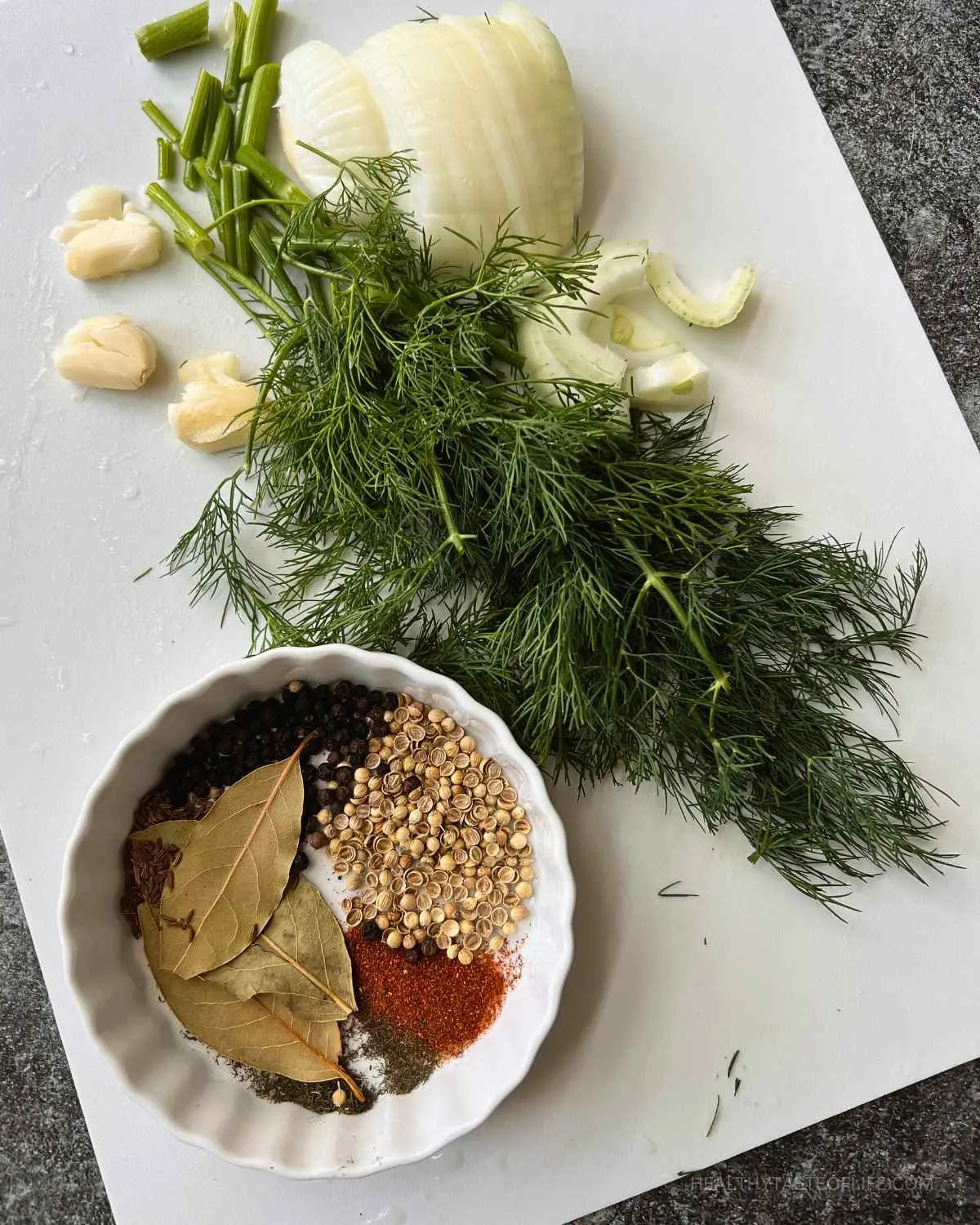
Ingredients That Add Extra Flavor To Fermented Fish
When fermenting fish to add flavor and create a unique taste profile, you can incorporate various ingredients. Some popular additions include:
- Herbs: Dill, bay leaves, thyme, rosemary, or cilantro can infuse the fish with their aromatic flavors.
- Spices: Peppercorns (black, white, or red), fennel seeds, mustard seeds, coriander seeds, or crushed red pepper flakes can give a kick or nuanced flavor to the fermentation.
- Vegetables: Slices of onions, garlic cloves, ginger, chili peppers, or bell peppers can be layered with the fish.
- Citrus: Thin slices or zest of lemons, limes, or oranges can introduce a tangy brightness.
- Sugar or honey: A touch of sweetness can balance the saltiness and enhance the overall flavor.
- Other flavors: Seaweed, kelp, or even a splash of wine or sake can be added for more depth.
Step-by-Step Fermentation Guide
- Preparation: Clean the mackerel fish thoroughly, removing scales and guts. You can ferment whole or in pieces, as per your preference. Personally I’m cutting it for a faster fermentation.
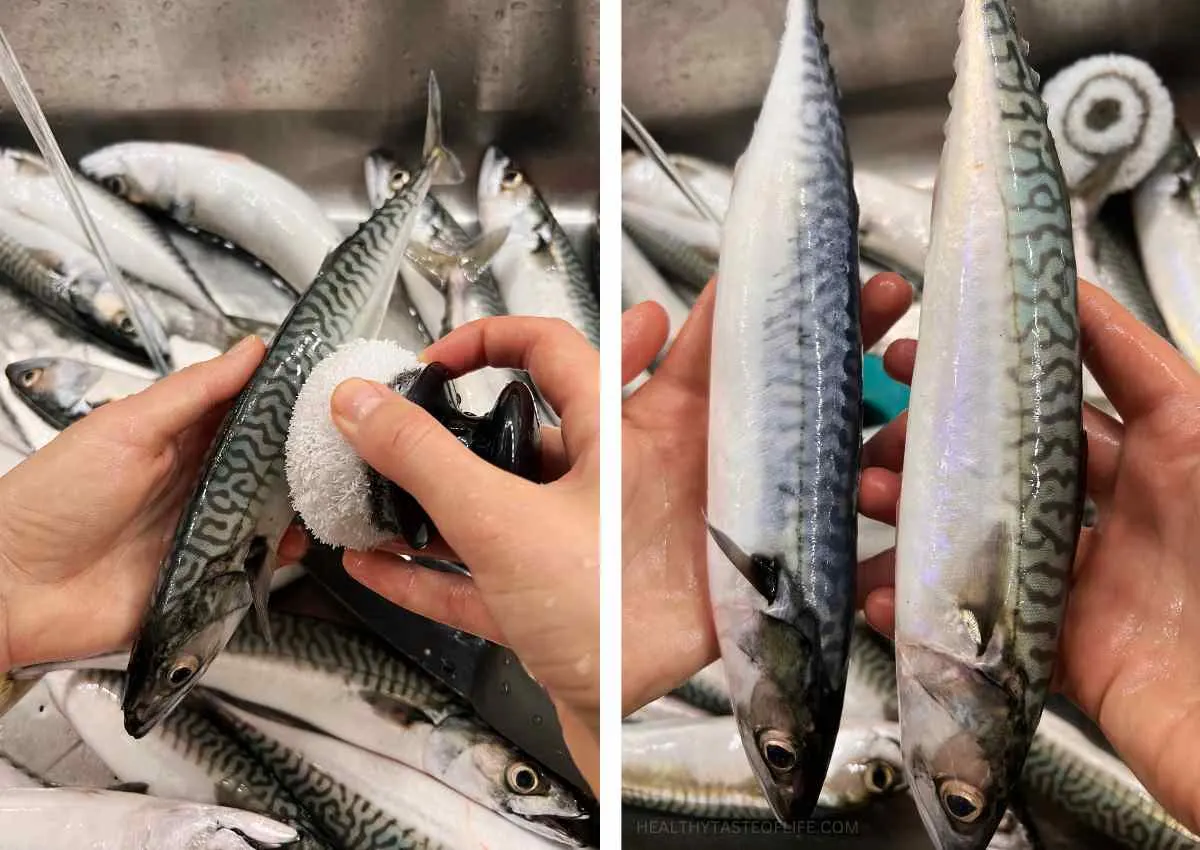
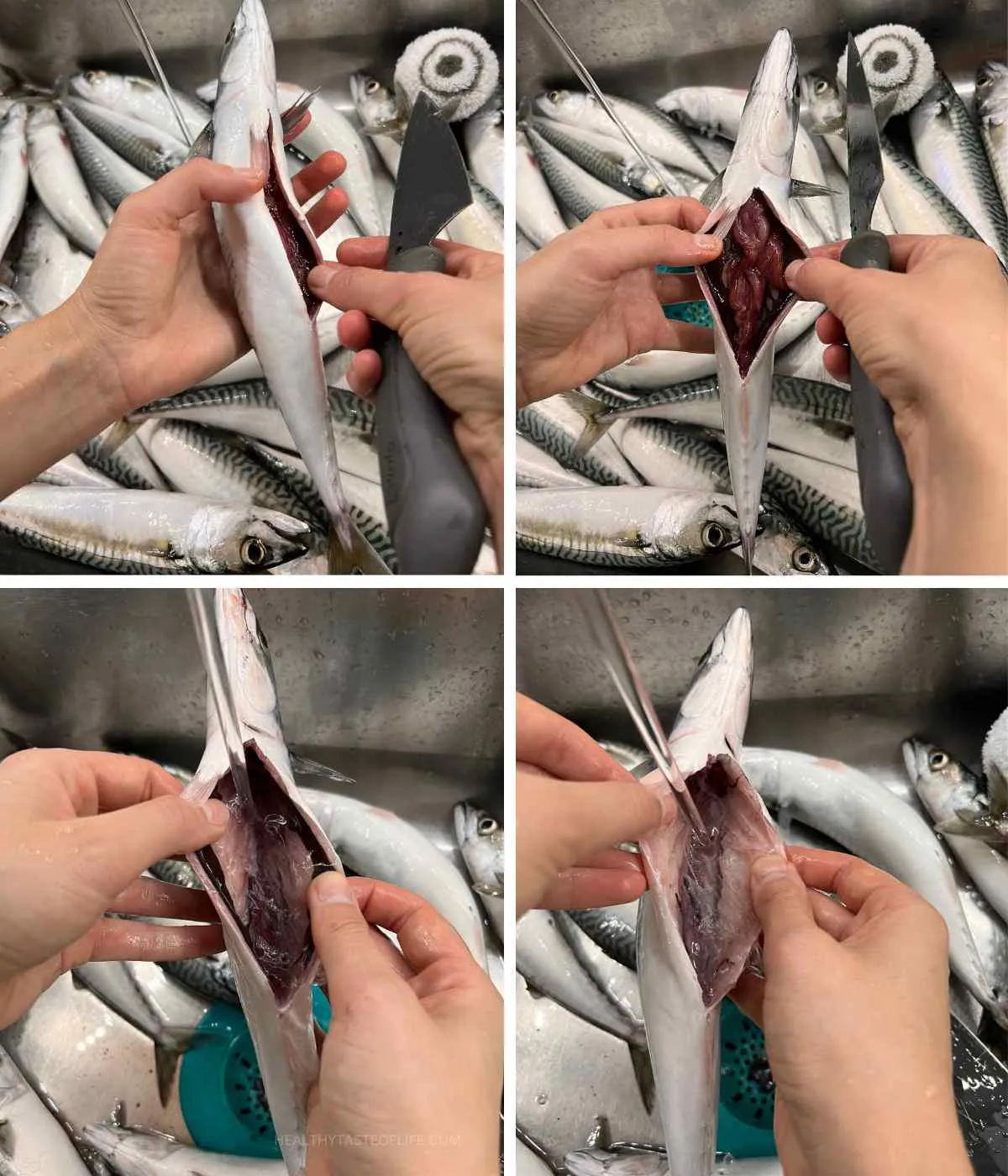


- Brining: Submerge the mackerel in the salt-water solution. When fermenting fish, especially fatty fish like mackerel, a typical brine solution should have a salt concentration that inhibits harmful pathogens while allowing beneficial bacteria to thrive.
- For fish fermentation, a general guideline is to use a brine ratio of 2.5% to 5% salt by weight. This means that for every liter (1000 ml) of water, you would dissolve 25 to 50 grams of salt in it. While this ratio is a good starting point, you might need to adjust based on your preferences over time; some might prefer a saltier flavor, while others may want it more mild. I used a 5% ratio and it’s not that salty.
- A 5% solution is on the milder side and is suitable for many ferments, but if you’re looking for longer-term storage or a stronger preservation effect, you might lean towards a 7.5% to 10% solution. The higher the salt concentration, the slower the fermentation process will be, and the longer the fish can be stored.
- Jar It: Place the mackerel pieces in a clean jar, pressing down to eliminate any air gaps. Add extra spices, condiments and herbs between the layers of fish.
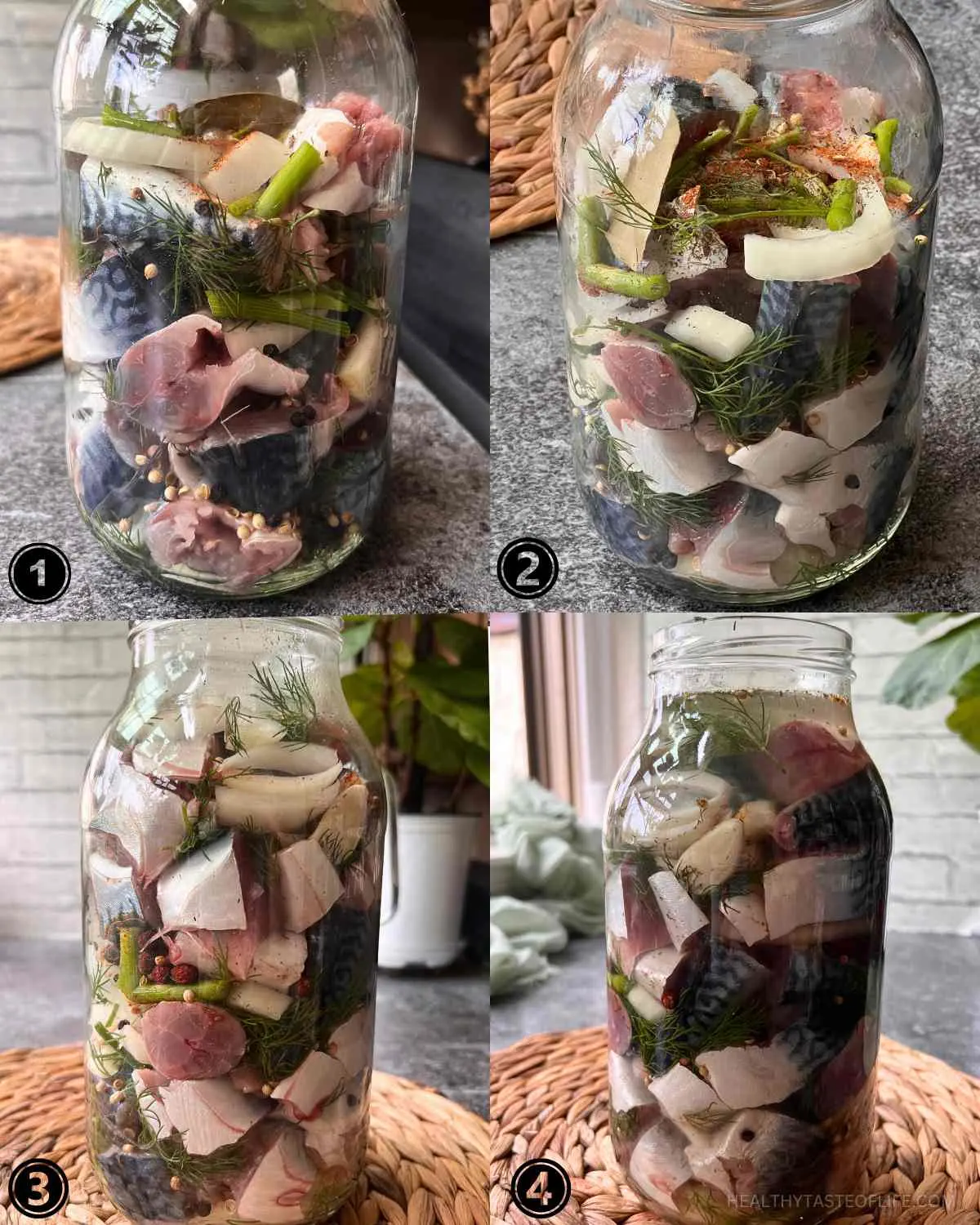
- Seal & Wait: Close the jar and store it in a cool, dark place for at least 2-3 days or longer, depending on your taste preference.
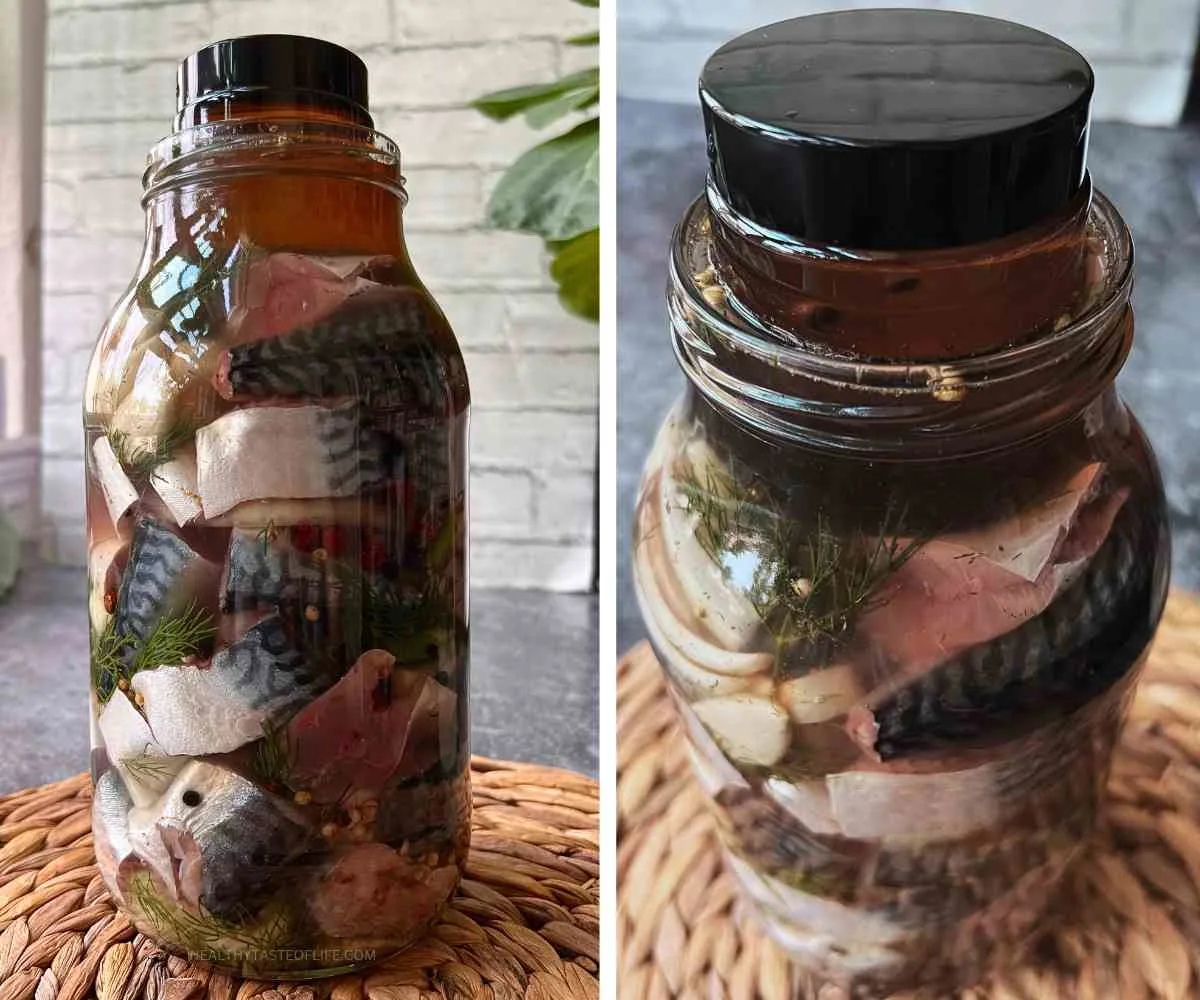
- Taste Test: Check the fermented mackerel after 2-3 days. If the taste is to your liking, it’s ready. If not, let it ferment longer. Usually it should be good within a week.
Remember, the key is to experiment and find combinations that suit your palate. Just ensure all added ingredients are clean and fresh to avoid unwanted microbes from affecting the fermentation process.
Expert Tip
Adding a touch of sauerkraut juice to your brine can be a game-changer in fermentation! This juice is rich in beneficial lactic acid bacteria, which can kick-start the fermentation process and ensure a successful ferment. Not only does it introduce active probiotics, but it can also add a nuanced depth of flavor to your fermented fish. Just a tablespoon or two is enough to give your brine that fermentation boost!
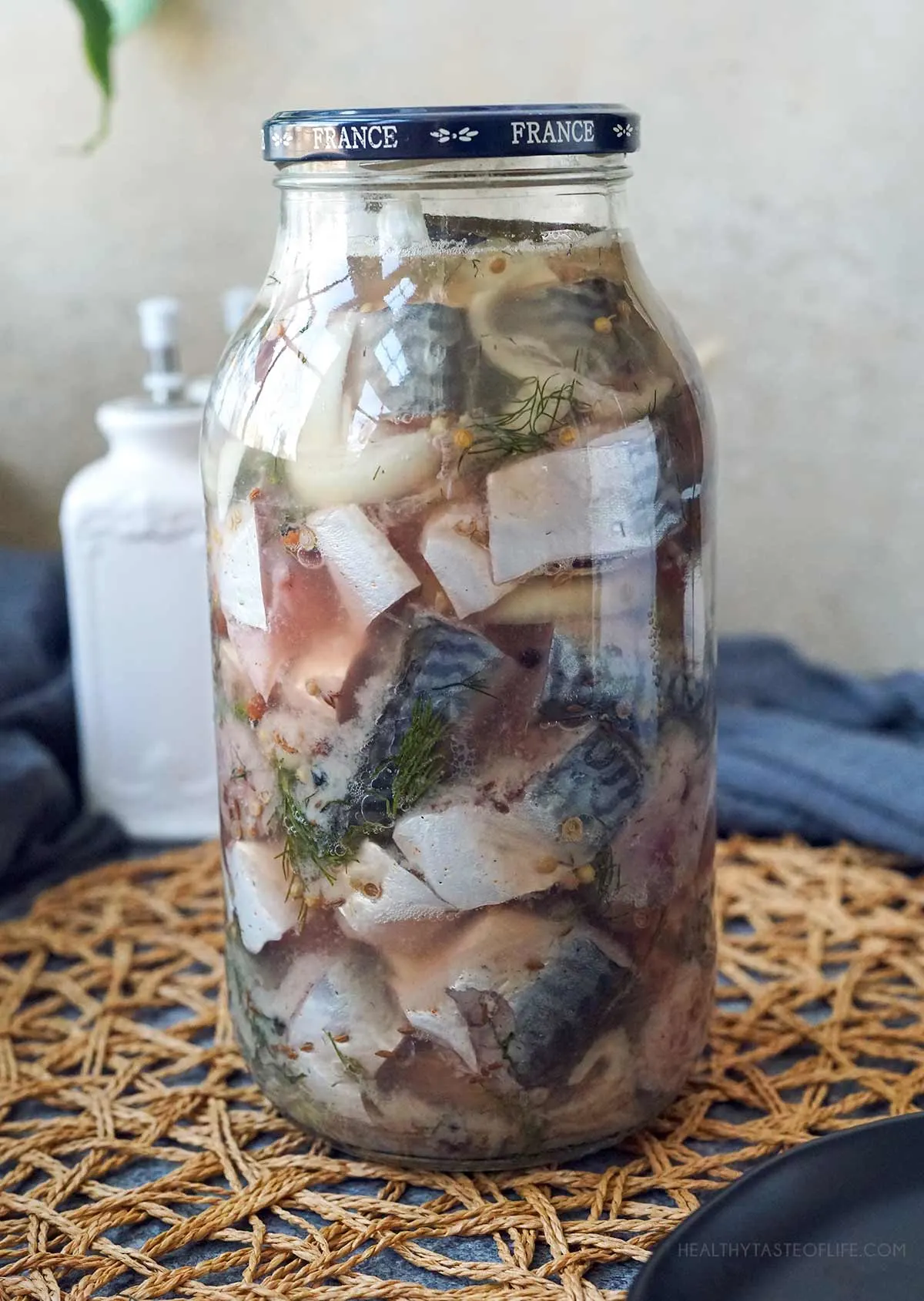
Storage & Shelf Life
Once your mackerel is fermented to your liking, store it in the refrigerator, it will halt or slow down further fermentation. Cold temperatures slow microbial activity, thus preserving the flavor profile you’ve achieved.
Properly fermented mackerel can last up to 2-3 weeks in the fridge. The longer you want to store it, the more salt you need to add. A 5% solution is on the milder side and will keep the fermented fish good for up to 10 days, then it might start to spoil. But if you’re looking for longer-term storage or a stronger preservation effect, you might lean towards a 7.5% to 10% solution. The higher the salt concentration, the slower the fermentation process will be, and the longer the fish can be stored.
Dry-Salting Or Salt-Curing Method
You can also ferment fish without adding water, using only salt. This method is often referred to as “dry salting” or “salt-curing.” It results in a concentrated flavor and a firmer texture compared to fish fermented in a water-based brine. If you’re using this method, make sure to use enough salt to ensure proper preservation and to prevent spoilage.
Here’s how it generally works:
- Coat Fish: Liberally coat fresh fish with salt, ensuring full coverage. The salt proportions can vary depending on the preferences, but a general guideline is 2-3 tablespoons of salt for every 1 kilogram (or 1,000 grams) of fish. Some people use 1 tablespoon of sugar as well. Mixing salt and sugar and then coating the fish with that mixture.
- Brine Formation: The salt draws moisture, creating its brine around the fish.
- Fermentation: In a cool, dark place, beneficial bacteria ferment the fish, producing lactic acid further acidifying the environment. In the absence of water, the fermentation process is typically slower.
- Optional seasonings: For dry salting fish, you can enhance flavor by incorporating herbs like dill or thyme, spices such as black pepper or coriander seeds, citrus zest, slivers of garlic or onion, and even chili flakes for heat. Ensure even distribution for optimal flavor infusion.
- Storage: Keep the fish in this environment until desired fermentation is achieved. It’s best to keep the salted fish in a cool, dark place. Traditionally, cellars or basements were used. If you’re in a warm climate or if room temperatures are consistently above 70°F (21°C), you might consider using a fridge to ensure safety.
- Before Use: Using this much salt will make the fish quite salty. Rinse or soak fish to remove excess salt before consuming or cooking.
Incorporating Fermented Mackerel in Recipes
Fermented mackerel can be a star ingredient in salads, sandwiches, and even main dishes. Try using it in traditional Asian dishes or mix it in with fresh veggies for a tangy salad.
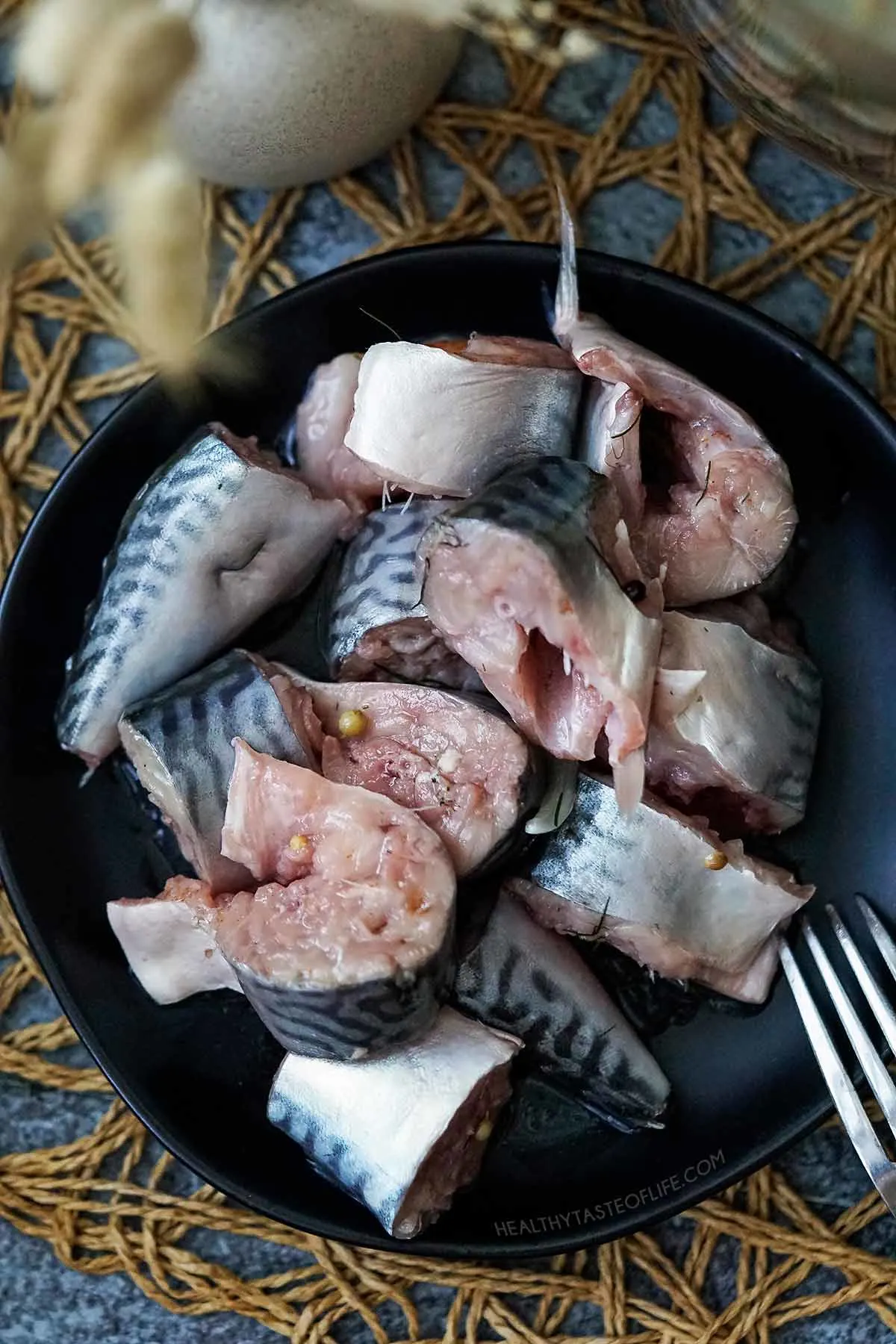
FAQs on Fermenting & Preserving Fish
Fermented fish is not only a delicacy in many cultures, but it also offers a unique and intensified flavor profile. Moreover, fermentation can enhance the nutritional value of fish by increasing its probiotic content, aiding in digestion and promoting gut health.
Absolutely! This method is versatile and can be applied to other fish varieties.
Yes, adding vegetables or spices can enhance flavors.
Yes, fermented fish is technically raw since it hasn’t been cooked with heat. However, the fermentation process essentially “cooks” the fish chemically, transforming its texture and flavor.
Pickled fish is preserved in an acidic solution, usually vinegar, along with seasonings. Fermented fish, on the other hand, undergoes a natural process where beneficial bacteria break down the fish’s sugars, resulting in a change in flavor and texture. No vinegar or external acid is added in fermentation.
Most species of fish can be fermented, including mackerel, herring, and sardines. However, it’s essential to ensure the fish is fresh and clean before starting the fermentation process.
The fermentation time for fish varies depending on personal taste preferences and the specific method used. Generally, it can range from a few days to several weeks. It’s essential to periodically check the fish during the fermentation process to ensure it’s fermenting properly and to gauge its readiness.
Mackerel is preserved through fermentation. Surströmming, on the other hand, is a specific Swedish delicacy made from fermented Baltic Sea herring. Surströmming is initially salted just enough to prevent the fish from rotting. This allows the fermentation process to occur, and as a result, the fish develops its strong aroma and taste.The fish are fermented, first in barrels before being canned. The entire process, from the initial catch to when the cans are ready for sale, spans from spring to early September. However, many Swedes believe that Surströmming becomes best for consumption around a year after production, allowing the flavors to mature further.
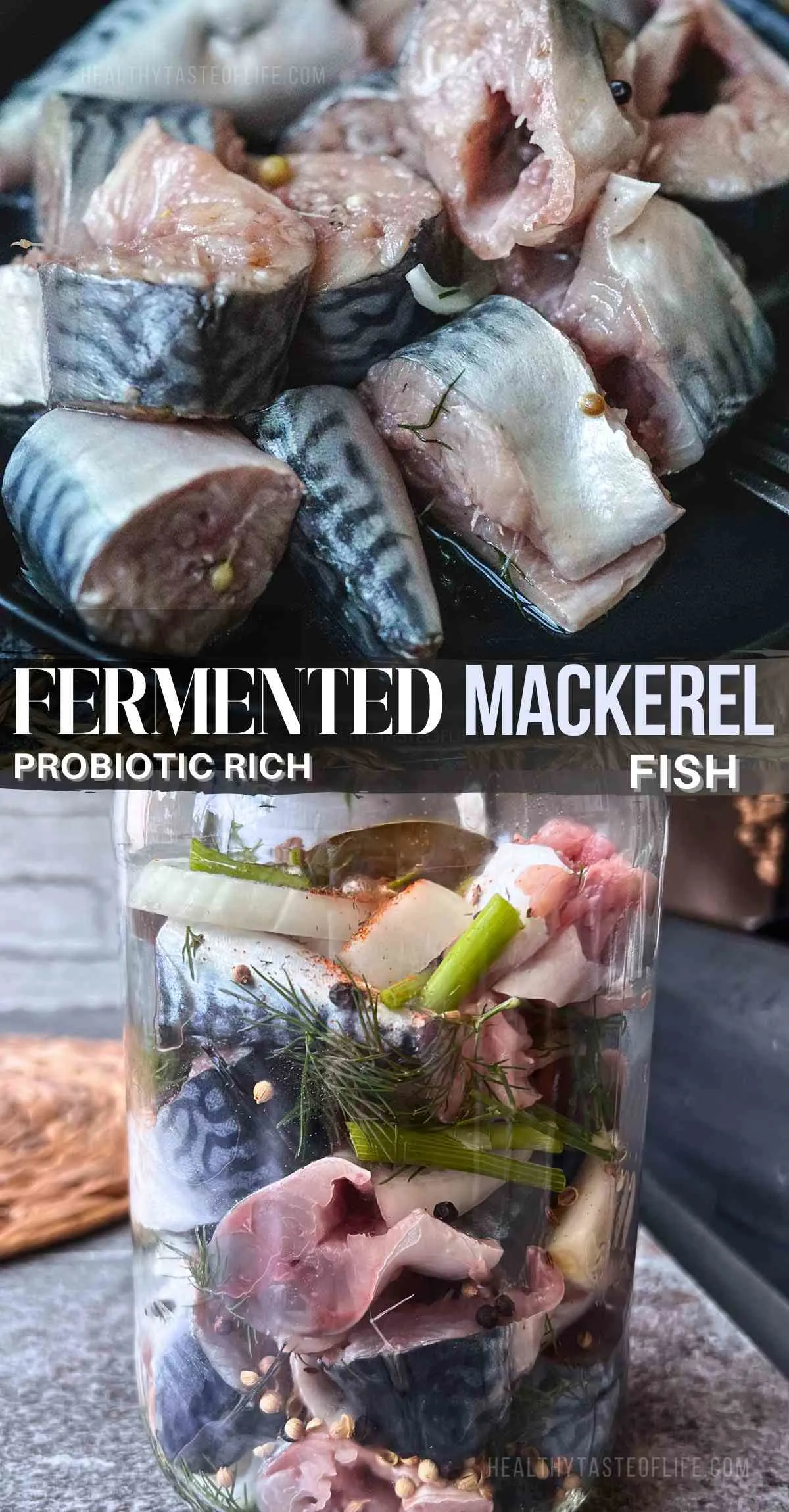
Heads up: some links are affiliated & I may receive a small commission from qualifying sales. For more info see my disclaimer policy.
Embarking on the journey of fermenting fresh mackerel can be both a culinary adventure and a gateway to preserving mackerel in the most natural way. It’s economical, healthy, and delicious.
More Fermented Recipes
Printable Recipe
Fermented Fresh Fish (Mackerel) Recipe
Ingredients
- 10 mackerel fish / or other - ~ 1 pound each, sliced
- 1000 ml 5% brine - 50g salt per 1000 ml water
Seasonings (Optional but Recommended)
- 1 tsp black peppercorns
- 3-4 cloves garlic - lightly smashed
- 1.5 tsp whole coriander seeds
- 3-4 bay leaves
- 2-3 sprigs fresh dill - or dry dill weed
- ½ onion - sliced
- 1 tsp whole mustard seeds
- 1 tsp or other favorite – spicy peppers, crushed red pepper flakes, smoked paprika
Instructions
Preparation
- Clean the mackerel fish thoroughly, removing scales and guts.
- The guts are removed by making a slit along the fish’s belly and pulling out the internal organs.
- You can ferment whole or in pieces, as per your preference. Personally I’m cutting it for a faster fermentation.
Brining
- Submerge the mackerel in the salt-water solution. When fermenting fish, especially fatty fish like mackerel, a general guideline is to use a brine ratio of 2.5% to 5% salt by weight. This means that for every liter (1000 ml) of water, you would dissolve 25 to 50 grams of salt in it. While this ratio is a good starting point, you might need to adjust based on your preferences over time; some might prefer a saltier flavor, while others may want it more mild.
- I used a 5% ratio (50 grams/ 2.7 Tbsp sea salt per 1000ml) and it’s not that salty. Use high quality sea salt, not table salt.
Jar It
- Place the mackerel pieces in a clean jar, pressing down to eliminate any air gaps. Add extra spices, condiments and herbs between the layers of fish.
- You can choose 3-4 seasonings, not all. Personally I think garlic, onion, bay leaves, black peppercorn and dill is a must. Add extra if you like.
- Pour the brine, ensuring everyhting is submerged under.
- Use a fermentation weight to keep the fish submerged. Top the jar with a fermentation lid or cheesecloth to prevent any falling dust, dirt or insects.
Wait To Ferment
- Store it in a cool, dark place for 1-3 days, depending on your taste preference. Once the fish reaches your desired taste, you can halt or slow down further fermentation by transferring it to the refrigerator. Cold temperatures slow microbial activity, thus preserving the flavor profile you've achieved.
Taste Test
- Check the fermented mackerel after 3 days. If the taste is to your liking, it’s ready. If not, let it ferment a bit longer.
Storage
- Usually a 5% brine solution is on the milder side and will keep the fermented fish good for up to 10 days, then it might start to spoil. Check the smell before trying.
- If you're looking for longer-term storage or a stronger preservation effect, you might lean towards a 7.5% to 10% solution. The higher the salt concentration, the slower the fermentation process will be, and the longer the fish can be stored.Also you can use the dry salting method (without water and is much saltier), check the notes below.
What You Need
Notes
Can I add a splash of vinegar or some sweetener?
You can add a splash of vinegar and sugar to assist in fermentation. Vinegar can help in pickling the fish, while sugar can balance out the acidity and enhance the overall taste. However, if you’re aiming for a purely lacto-fermented product, adding vinegar can change the environment and potentially inhibit natural fermentation.Dry Salting Method
You can also ferment fish without adding water, using only salt. This method is often referred to as “dry salting” or “salt-curing.” It results in a concentrated flavor and a firmer texture compared to fish fermented in a water-based brine. If you’re using this method, make sure to use enough salt to ensure proper preservation and to prevent spoilage. Here’s how it generally works:- Coat Fish: Liberally coat fresh fish with salt, ensuring full coverage (inside it;s belly as well). The salt proportions can vary depending on the preferences, but a general guideline is 2-3 tablespoons of salt for every 1 kilogram (or 1,000 grams) of fish. Some people use 1 tablespoon of sugar as well. Mixing salt and sugar and then coating the fish with that mixture.
- Brine Formation: The salt draws moisture, creating its brine around the fish.
- Fermentation: In a cool, dark place, beneficial bacteria ferment the fish, producing lactic acid further acidifying the environment. In the absence of water, the fermentation process is typically slower.
- Optional seasonings: For dry salting fish, you can enhance flavor by incorporating herbs like dill or thyme, spices such as black pepper or coriander seeds, citrus zest, slivers of garlic or onion, and even chili flakes for heat. Ensure even distribution for optimal flavor infusion.
- Storage: Keep the fish in this environment until desired fermentation is achieved. It’s best to keep the salted fish in a cool, dark place. Traditionally, cellars or basements were used. If you’re in a warm climate or if room temperatures are consistently above 70°F (21°C), you might consider using a fridge to ensure safety.
- Before Use: Using this much salt will make the fish quite salty. Rinse or soak fish to remove excess salt before consuming or cooking.
Nutrition
The information shown is an estimate provided by an online nutrition calculator.
©HealthyTasteOfLife. Content and photographs are copyright protected and need prior permission to use. Copying and/or pasting full recipes to other websites and any social media is strictly prohibited. Sharing and using the link of this recipe is both encouraged and appreciated!

